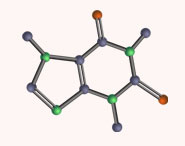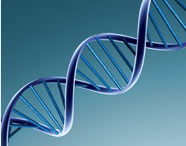


 علم الكيمياء
علم الكيمياء 
 الكيمياء التحليلية
الكيمياء التحليلية 
 الكيمياء الحياتية
الكيمياء الحياتية 
 الكيمياء العضوية
الكيمياء العضوية 
 الكيمياء الفيزيائية
الكيمياء الفيزيائية
 الكيمياء اللاعضوية
الكيمياء اللاعضوية 
 مواضيع اخرى في الكيمياء
مواضيع اخرى في الكيمياء
 الكيمياء الصناعية
الكيمياء الصناعية |
Read More
Date: 18-1-2017
Date: 12-7-2017
Date: 16-1-2017
|
Galvanic cells: Getting electricity from chemical reactions
Galvanic cells use redox reactions to produce electricity.
These cells are commonly called batteries, but sometimes this name is somewhat incorrect, because a battery is composed of two or more cells connected together. You put a battery in your car, but you put a cell into your flashlight. A Daniell cell is a type of galvanic cell that uses the Zn/Cu2+ reaction to produce electricity. In the Daniell cell, a piece of zinc metal is placed in a solution of zinc sulfate in one container, and a piece of copper metal is placed in a solution of copper(II) sulfate in another container. These strips of metal are called the cell’s electrodes. They act as a terminal, or a holding place, for electrons.
A wire connects the electrodes, but nothing happens until you put a salt bridge between the two containers. The salt bridge, normally a U-shaped hollow tube filled with a concentrated salt solution, provides a way for ions to move from one container to the other to keep the solutions electrically neutral.
It’s like running only one wire up to a ceiling light; the light won’t work unless you put in a second wire to complete the circuit. With the salt bridge in place, electrons can start to flow through the same basic redox reaction as the one I show you at the beginning of this section. Zinc is being oxidized, releasing electrons that flow through the wire to the copper electrode, where they’re available for the Cu2+ ions to use in forming copper metal. Copper ions from the copper(II) sulfate solution are being plated out on the copper electrode, while the zinc electrode is being consumed. The cations in the salt bridge migrate to the container with the copper electrode to replace the copper ions being consumed, while the anions in the salt bridge migrate toward the zinc side, where they keep the solution containing the newly formed Zn2+ cations electrically neutral.
The zinc electrode is called the anode, the electrode at which oxidation takes place, and it’s labeled with a – sign. The copper electrode is called the cathode, the electrode at which reduction takes place, and it’s labeled with a + sign.
This Daniell cell produces a little over 1 volt. You can get just a little more voltage if you make the solutions that the electrodes are in very concentrated. But what can you do if you want, for example, 2 volts? You have a couple of choices: You can hook two of these cells up together and produce 2 volts, or you can choose two different metals that are farther apart than zinc and copper on the activity series chart. The farther apart the metals are on the activity series, the more voltage the cell produces.



|
|
|
|
للعاملين في الليل.. حيلة صحية تجنبكم خطر هذا النوع من العمل
|
|
|
|
|
|
|
"ناسا" تحتفي برائد الفضاء السوفياتي يوري غاغارين
|
|
|
|
|
|
|
ملاكات العتبة العباسية المقدسة تُنهي أعمال غسل حرم مرقد أبي الفضل العباس (عليه السلام) وفرشه
|
|
|